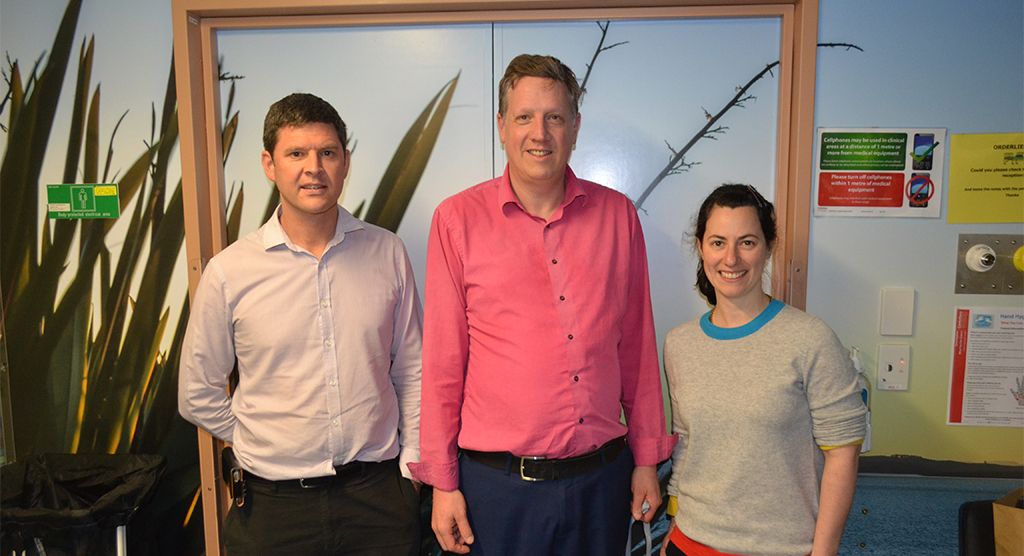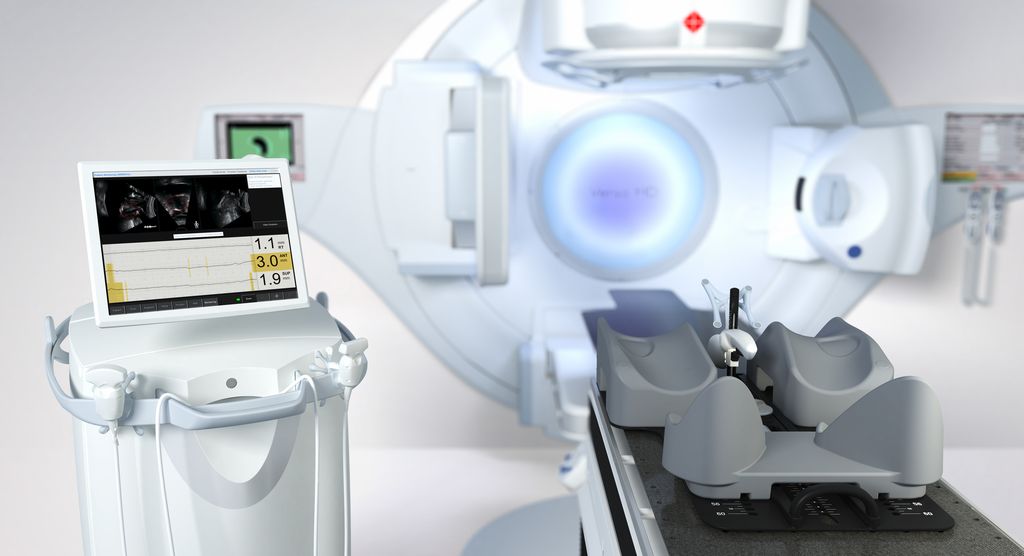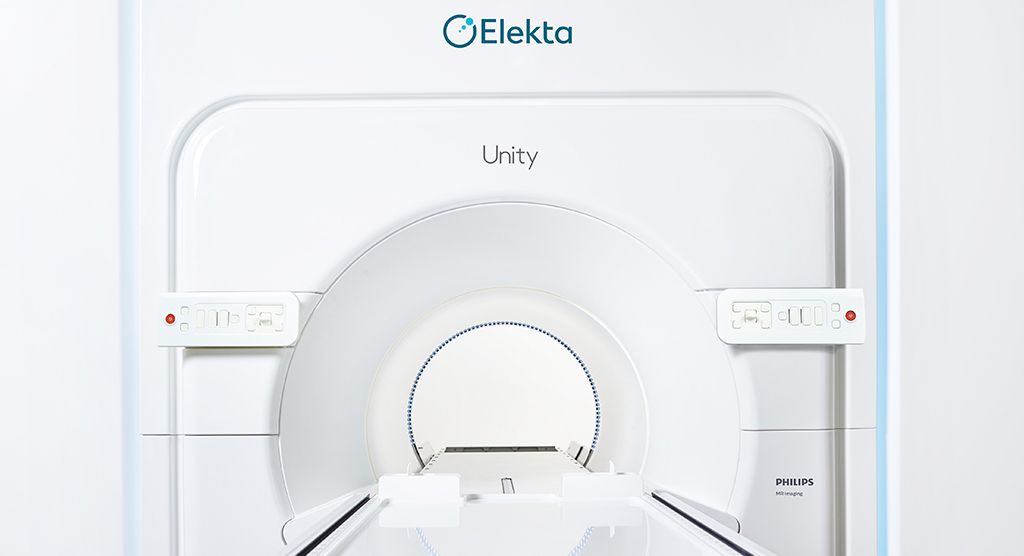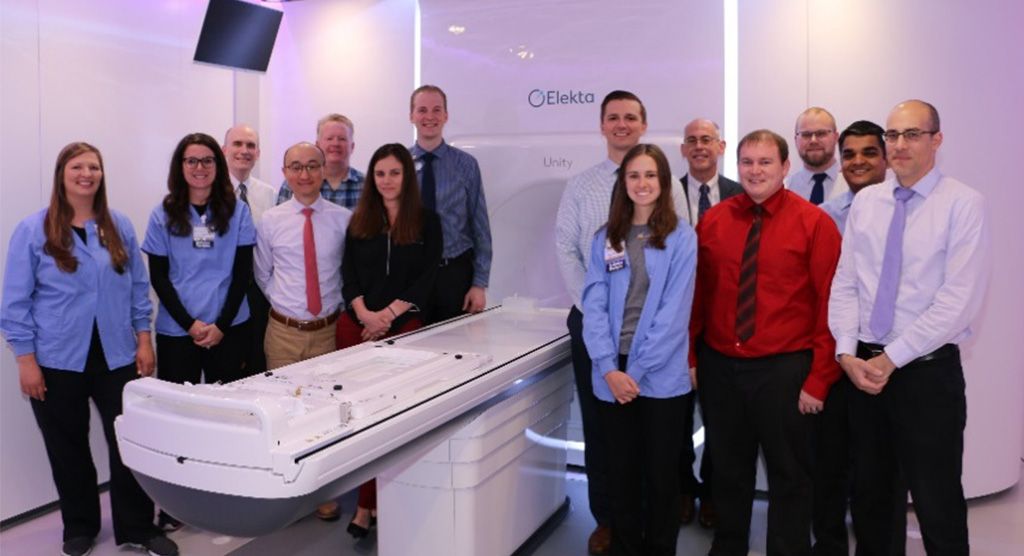Key Elekta technologies at the heart of left-sided breast cancer radiotherapy
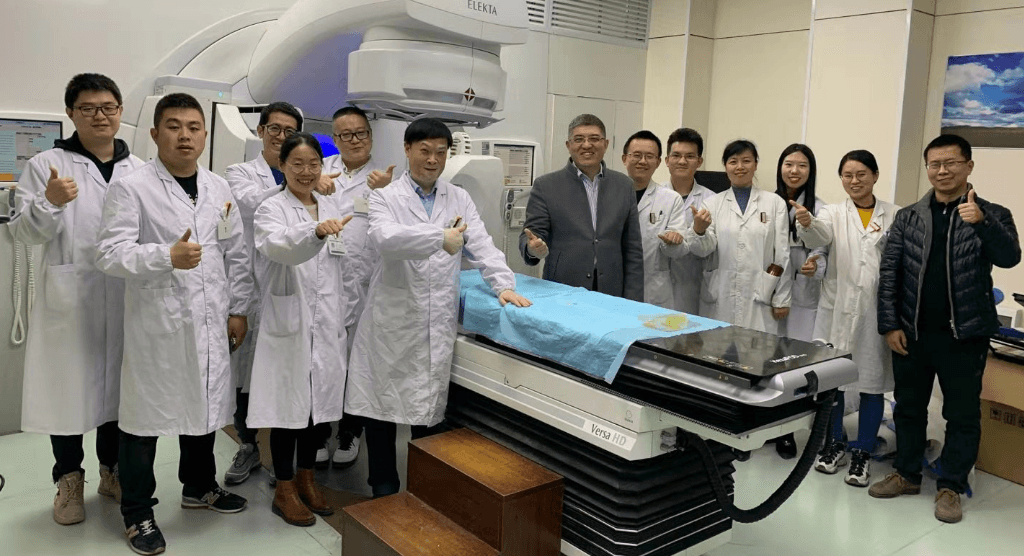
Clinicians at Chinese medical center harness Active Breathing Coordinator and MotionView intrafraction monitoring to help spare organs-at-risk

The radiotherapy department at First Affiliated Hospital-Xi’an Jiaotong University (FAH-XJTU, Xi’an, Shaanxi, China) recently adopted advanced Elekta solutions for breath-hold and real-time image guidance technology to treat left-sided breast cancer. For some patients with a large respiratory movement amplitude, breast tumors could have a significant range of motion during the breathing cycle, which can significantly impact radiotherapy accuracy. Managing this respiratory movement to reduce its impact on tumor position during treatment is critical.
FAH-XJTU’s combined use of a moderate deep inspiration breath-hold (mDIBH) technique using Elekta’s Active Breathing Coordinator™ (ABC) and MotionView™ intra-fraction image guidance has created new opportunities for people with breast cancer in northwest China.
Moderate deep inspiration breath-hold
The mDIBH technique is used for treating left-sided breast cancer to control tumor motion caused by respiratory movement. The method requires patients to inhale to a certain threshold level and then hold their breath at that level for imaging, positioning and treatment. This inspiration threshold is set depending on each patient’s situation and ability.
“ABC helps patients comfortably maintain a breath-hold during treatment delivery, helping keep the breast tumor almost static.”
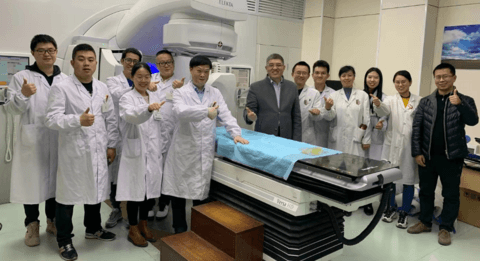
“ABC helps patients comfortably maintain a breath-hold during beam delivery, helping keep the breast tumor almost static,” says FAH-XJTU Chief Physician Zhang Xiaozhi, MD. “The deep inspiration expands the thorax, increasing the distance between the breast and the heart. In this way, we can maximize the dose to the target, while protecting the surrounding normal tissues and critical structures. It has been reported that the average dose to the heart can be reduced by up to 62 percent and dose to the lung can also be decreased significantly.”1
The adoption of MotionView real-time image guidance technology during treatment further ensures accurate dose delivery to the target, he adds.
Active Breathing Coordinator workflow
ABC is used to monitor airflow and to track the patient’s respiratory movement, which is displayed on the screen as a curve. After setting an appropriate inhalation threshold value, the patient presses a button when they are ready to proceed with a breath-hold. The operator presses the control button and, when the patient inhales to the pre-set value, the air valve is activated to close.
“This helps patients hold their breath and ensures their lung volume doesn’t change,” says FAH-XJTU’s Wang Shuwen, MD, Associate Chief Physician. “Elekta’s Response gating interface sends a signal to the linac, which activates the radiation beam. When the breath-hold finishes, patients take their finger off the button, the radiation beam stops, the valve opens, and the patient can breathe freely again. This process repeats during each fraction until the required dose is delivered.”
Treatment of a left breast mucinous adenocarcinoma

FAH-XJTU clinicians treated a 48-year-old patient for left-sided breast mucinous adenocarcinoma. Following breast-conserving surgery, clinicians decided to treat her using the mDIBH technique.
Before simulation, the patient received training on ABC to allow her to practice breathing and breath-holds, then her maximum tidal volume and breath-hold time were recorded.
FAH-XJTU Attending Physician Hui Beina, MD, used the CT images to contour the target and healthy organs. The prescribed dose was 50 Gy to the PTV and 60 Gy to the P-GTV, delivered over 25 fractions. A 6 MV High Dose Rate mode IMRT treatment plan was calculated using Monaco® 5.11.

Before treatment delivery, the patient was positioned accurately on the treatment table using ABC and a fast XVI CBCT scan was acquired to ensure the treatment isocenter and planned target isocenter were aligned. Following the necessary corrections, the patient was ready to be treated on FAH-XJTU’s Versa HD™ system.
During treatment, department staff instructed the patient to push the ABC enable button. When the patient inhaled, the ABC curve on screen changed from red to green. The operator pressed the space bar and the threshold volume was displayed. When the patient inhaled to that value, the ABC control system became active to assist the patient’s breath-hold, which kept the patient’s organs stationary. Treatment delivery began during the breath-hold, with gating facilitated using the Response gating interface. During treatment, MotionView monitored the real-time movement of organs, such as the breast, thorax, diaphragm and heart. Apart from the heartbeat, there were no obvious anatomical changes, ensuring treatment accuracy.
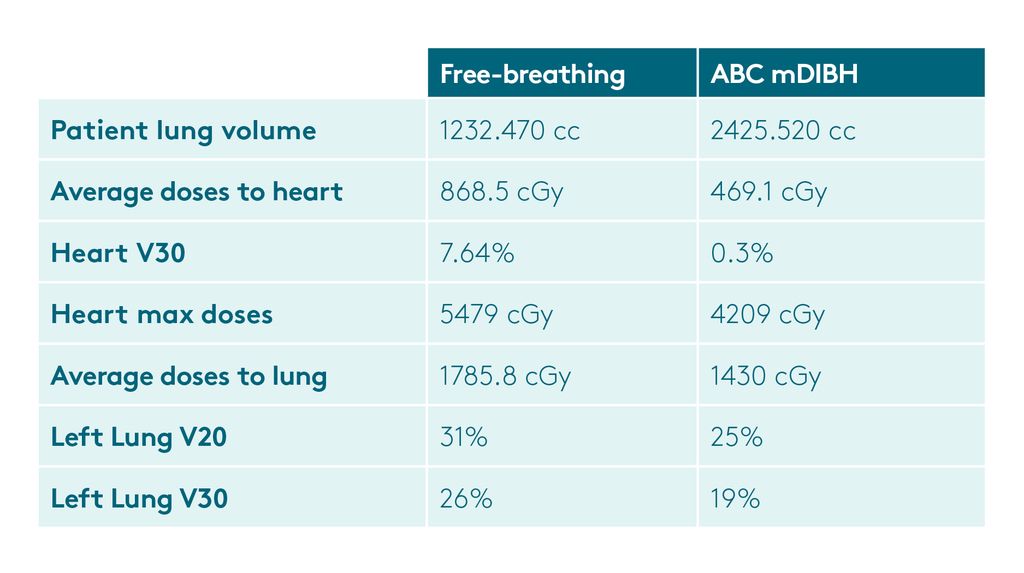
Advantages of mDIBH using Active Breathing Coordinator
Elekta Active Breathing Coordinator was used successfully to manage respiratory movement and enhance treatment accuracy during left-sided breast radiotherapy, according to Dr. Xiaozhi.

“The mDIBH technique also provided significant critical structure sparing during treatment, reducing dose to the left lung and heart,” he says. “At the same time, MotionView intrafraction image guidance technology enabled real-time monitoring of tumor and organ motion, which further enhanced our assurance of treatment accuracy. This technology offers similar benefits to a wide range of patients whose tumors are affected by respiratory movement.”
Since the first Versa HD began treating patients at FAH-XJTU, the radiotherapy department has been involved in researching and understanding its different clinical functionalities. The combination of advanced radiotherapy equipment and the latest associated technologies has facilitated the delivery of precision radiation medicine, helping the hospital achieve the best clinical objectives and ensuring high-quality cancer treatments for patients in northwest China.
Learn more about Active Breathing Coordinator.
- Eldredge-Hindy, H. et al (2015) Active Breathing Coordinator reduces radiation dose to the heart and preserves local control in patients with left breast cancer: Report of a prospective trial. Practical Radiation Oncology 5(1): 4-10
